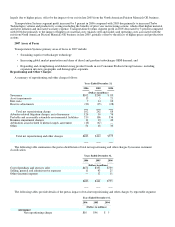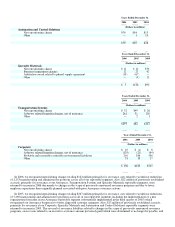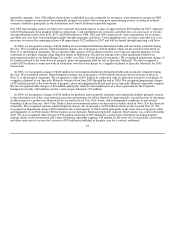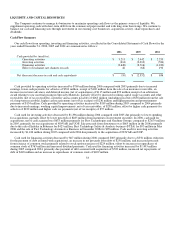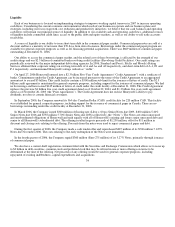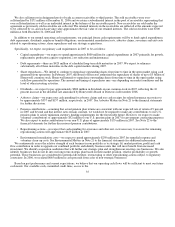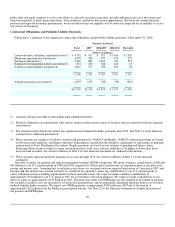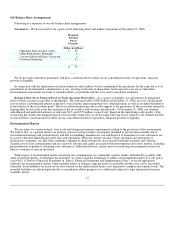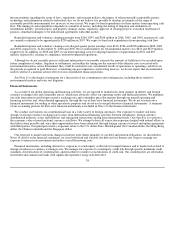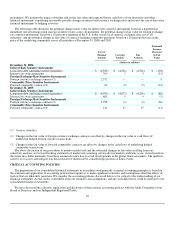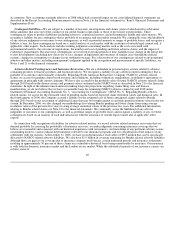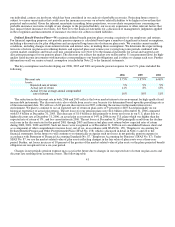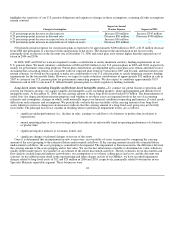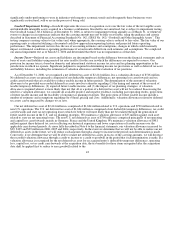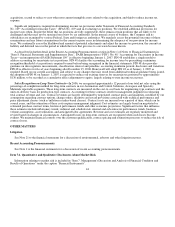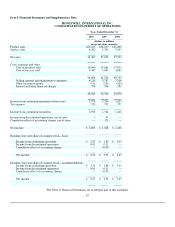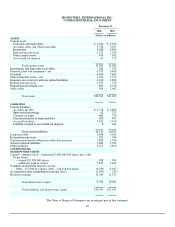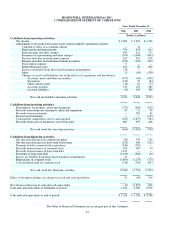Honeywell 2006 Annual Report Download - page 53
Download and view the complete annual report
Please find page 53 of the 2006 Honeywell annual report below. You can navigate through the pages in the report by either clicking on the pages listed below, or by using the keyword search tool below to find specific information within the annual report.
the uncertainties regarding the status of laws, regulations, enforcement policies, the impact of other potentially responsible parties,
technology and information related to individual sites, we do not believe it is possible to develop an estimate of the range of
reasonably possible environmental loss in excess of our accrual. We expect to fund expenditures for these matters from operating cash
flow. The timing of cash expenditures depends on a number of factors, including the timing of litigation and settlements of
remediation liability, personal injury and property damage claims, regulatory approval of cleanup projects, execution timeframe of
projects, remedial techniques to be utilized and agreements with other parties.
Remedial response and voluntary cleanup payments were $264, $247 and $248 million in 2006, 2005, and 2004, respectively, and
are currently estimated to be approximately $250 million in 2007. We expect to fund such expenditures from operating cash flow.
Remedial response and voluntary cleanup costs charged against pretax earnings were $210, $186 and $536 million in 2006, 2005
and 2004, respectively. At December 31, 2006 and 2005, the recorded liability for environmental matters was $831 and $879 million,
respectively. In addition, in 2006 and 2005 we incurred operating costs for ongoing businesses of approximately $101 and $87
million, respectively, relating to compliance with environmental regulations.
Although we do not currently possess sufficient information to reasonably estimate the amounts of liabilities to be recorded upon
future completion of studies, litigation or settlements, and neither the timing nor the amount of the ultimate costs associated with
environmental matters can be determined, they could be material to our consolidated results of operations or operating cash flows in
the periods recognized or paid. However, considering our past experience and existing reserves, we do not expect that environmental
matters will have a material adverse effect on our consolidated financial position.
See Note 21 to the financial statements for a discussion of our commitments and contingencies, including those related to
environmental matters and toxic tort litigation.
Financial Instruments
As a result of our global operating and financing activities, we are exposed to market risks from changes in interest and foreign
currency exchange rates and commodity prices, which may adversely affect our operating results and financial position. We minimize
our risks from interest and foreign currency exchange rate and commodity price fluctuations through our normal operating and
financing activities and, when deemed appropriate, through the use of derivative financial instruments. We do not use derivative
financial instruments for trading or other speculative purposes and do not use leveraged derivative financial instruments. A summary
of our accounting policies for derivative financial instruments is included in Note 1 to the financial statements.
We conduct our business on a multinational basis in a wide variety of foreign currencies. Our exposure to market risk from
changes in foreign currency exchange rates arises from international financing activities between subsidiaries, foreign currency
denominated monetary assets and liabilities and anticipated transactions arising from international trade. Our objective is to preserve
the economic value of non-functional currency cash flows. We attempt to have all transaction exposures hedged with natural offsets to
the fullest extent possible and, once these opportunities have been exhausted, through foreign currency forward and option agreements
with third parties. Our principal currency exposures relate to the U.S. dollar, Euro, British pound, the Canadian dollar, the Hong Kong
dollar, the Chinese renminbi and the Singapore dollar.
Our exposure to market risk from changes in interest rates relates primarily to our debt and pension obligations. As described in
Notes 14 and 16 to the financial statements, we issue both fixed and variable rate debt and use interest rate swaps to manage our
exposure to interest rate movements and reduce overall borrowing costs.
Financial instruments, including derivatives, expose us to counterparty credit risk for nonperformance and to market risk related to
changes in interest or currency exchange rates. We manage our exposure to counterparty credit risk through specific minimum credit
standards, diversification of counterparties, and procedures to monitor concentrations of credit risk. Our counterparties are substantial
investment and commercial banks with significant experience using such derivative
38


